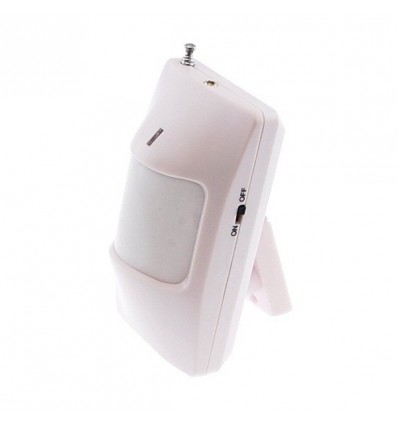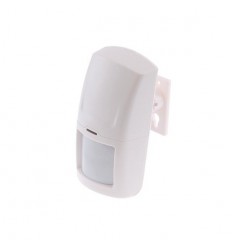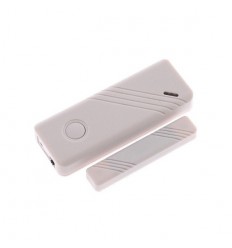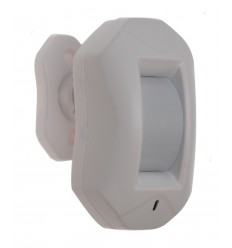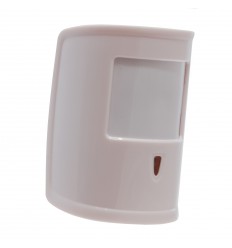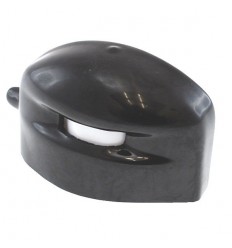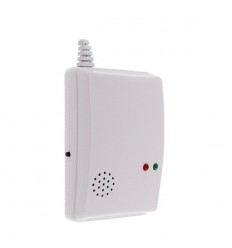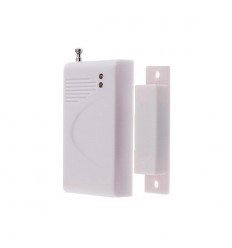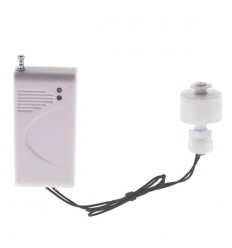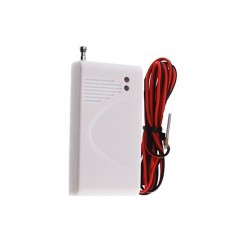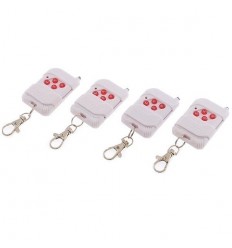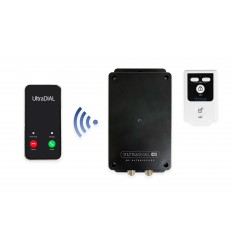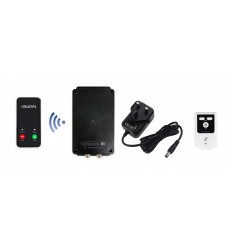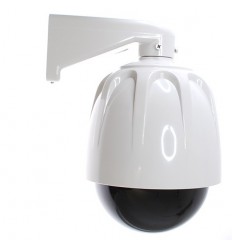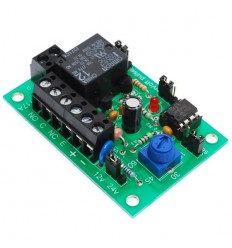No products
Prices are tax included
Product successfully added to your shopping cart
There are 0 items in your cart. There is 1 item in your cart.
Battery Powered Wireless PIR, works in conjunction with the WG GSM Wireless Alarm Systems.
Standard Battery Powered Wireless PIR's, designed to work with all of our WG Wireless GSM Alarm Systems, they have a 10 metre & 110 degrees detection pattern and a wireless range back to the receiver of 80 metres (line of sight).
You can learn the PIR's into the 100 available wireless alarm zones on the impressive WG 'Touch' Wireless GSM Alarm System (each working in a selection of different ways to suit most applications).
-
Std PIR (WG Wireless Alarm)
Reference: 005-2110Battery Powered Wireless PIR, designed to work in conjunction with our WG 'Touch' Wireless GSM Alarm System
£ 20.99 -
Door Contact (WG Wireless Alarm)
Reference: 005-2120Wireless Magnetic Alarm Contact, works in conjunction with our WG Wireless GSM Alarm Systems, designed to secure & protect windows and doors.
£ 18.89 -
Wireless Curtain PIR
Reference: 005-1450Wireless Curtain PIR, creates a very narrow detection beam (ideal for locating behind patio doors, bay windows etc). For use with all of our KP Wireless Alarm Systems & Alert Watch.
£ 29.45 -
Pet Friendly KP Wireless PIR
Reference: 005-1230Pet Friendly Wireless PIR, designed to detect animals weighing over 10 KG, ideal for locations with small animals present, can be used with all of our KP Alarm Systems.
£ 34.95 -
WG 'Touch' Alarm Wireless External Curtain PIR
Reference: 004-2220Wireless External Curtain PIR, creates a very narrow detection beam (ideal for locating on balconies, patio doors etc). For use with the WG 'Touch' Wireless GSM Alarm System.
£ 31.49 -
Panic Button for the WG GSM Wireless Alarm.
Reference: 005-1280Wireless Panic Button, used to trigger the WG Wireless Alarm from up to 100 metres away, in the event of a medical or security incident.
£ 18.89 -
Gas Detector for the KP & WG Wireless Alarms.
Reference: 005-1310Wireless Gas Detector, will activate the KP & WG Wireless Alarms when Gas is detected.
£ 25.15 -
Std Door & Window Contact for the for the WG GSM Wireless Alarm.
Reference: 005-1200This Wireless Magnetic Alarm Contact works in conjunction with our WG Wireless GSM Alarm System's, they will trigger the alarm if the door or window is opened.
£ 17.84 -
Water Float Kit for the WG GSM Wireless Alarm.
Reference: 005-1320Wireless Alarm Float Sensor, designed to detect rising or falling water (depending on how it is used) and can be used with all of the WG Wireless Alarm Systems.
£ 26.24 -
Damp Sensors & Transmitter for the WG GSM Wireless Alarm.
Reference: 005-1330Wireless Damp Sensor & Transmitter, designed to be fitted underneath carpets (or similar locations) and will send a wireless signal back to any WG Wireless GSM Alarm if water is detected.
£ 15.74 -
Special Offer Remote Control Pack for the WG GSM Wireless Alarm.
Reference: 005-1261Special Offer, Remote Control Pack, used to Arm, Disarm or activate the Panic Button, on all of the WG Wireless Alarm Systems.
£ 57.94 £ 76.05 -£ 18.11
- 1 x Wireless PIR.
- 1 x Mounting Bracket.
- 1 x Battery.
- Size of Wireless PIR without Bracket: 110 (H) x 60 (W) x 45 (D) mm.
- Size of Wireless PIR with bracket: 110 (H) x 60 (W) x 70 (D) mm deep.
- Detection Range:10 metres Distance.
- Detection Angle: 110 Degrees.
- Power Suppy: 1 x PP3 Battery.
- Battery Life: Approximately 6 - 12 months (normal use).
Mounting the PIR Sensor:
The key to successful operation of any PIR sensor is choosing the correct location. A sensor mounted in a unsuitable location has the potential to cause false triggers and reduce performance. The main rules that should be followed are:
1) Mount the PIR into a corner of a room.
2) Avoid heat spots from bright lamps suddenly turning on or off.
3) Do not install immediately above a radiator.
4) Do not install in a glass roof conservatory.
How PIR's Work (passive infrared detector):
All PIR sensors detect changes in infra-red radiation, in the form of heat emitted by a number of bodies including people, cars and to a lesser extent, dogs or other small animals. The bigger the body, the more infra-red radiation isemitted and the easier it is for a PIR sensor to detect.
The field of view is the area in which changes in infra-red radiation can be detected. The field of view can alter with changes in temperature and the size of the heat source.
The construction of the PIR and Fresnel Lens divide the field of view into a number of zones both vertically and horizontally.

